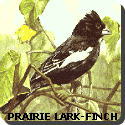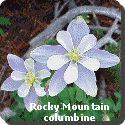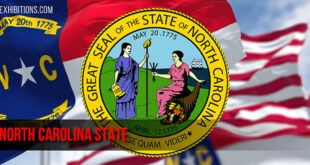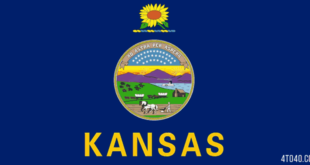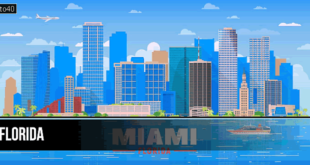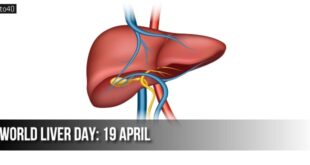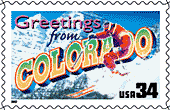 Colorado, one of the Mountain states of the United States, is a landlocked, rectangular territory. It is bordered by six states: Wyoming and Nebraska on the north, Utah on the west, New Mexico and Oklahoma on the south, and Kansas on the east. Permanent human occupation of the area dates back at least 10,000 years. Spanish exploratory expeditions beginning in the early 16th century left no settlements, and it was not until the discovery of gold in 1858 that Colorado received its first modern permanent settlement. The name Colorado was chosen in 1861 by the first territorial governor, William Gilpin, because the region contains the source of the Colorado River; the word is Spanish for “colored” or “reddish.”
Colorado, one of the Mountain states of the United States, is a landlocked, rectangular territory. It is bordered by six states: Wyoming and Nebraska on the north, Utah on the west, New Mexico and Oklahoma on the south, and Kansas on the east. Permanent human occupation of the area dates back at least 10,000 years. Spanish exploratory expeditions beginning in the early 16th century left no settlements, and it was not until the discovery of gold in 1858 that Colorado received its first modern permanent settlement. The name Colorado was chosen in 1861 by the first territorial governor, William Gilpin, because the region contains the source of the Colorado River; the word is Spanish for “colored” or “reddish.”
Since World War II, Colorado has been among the faster-growing states. Manufacturing and services have replaced agriculture as the primary economic sectors. Colorado today faces such challenges as cultural pluralism, land- and water-use conflicts, imbalance in population distribution, and the adverse environmental impact of resource conversion.
Land & Resources
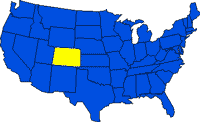 Colorado has a higher average elevation (2,070 m/6,790 ft) than any other U.S. state, with about 1,000 peaks higher than 3,048 m (10,000 ft). Of the country’s 80 peaks over 4,267 m (14,000 ft), Colorado has 53. The state’s lowest point, in the southeast, is nearly two-thirds of a mile high (1,021 m/3,350 ft), and the highest is Mount ELBERT at 4,399 m (14,433 ft).
Colorado has a higher average elevation (2,070 m/6,790 ft) than any other U.S. state, with about 1,000 peaks higher than 3,048 m (10,000 ft). Of the country’s 80 peaks over 4,267 m (14,000 ft), Colorado has 53. The state’s lowest point, in the southeast, is nearly two-thirds of a mile high (1,021 m/3,350 ft), and the highest is Mount ELBERT at 4,399 m (14,433 ft).
Physio-graphic Regions
Portions of three great physio-graphic regions of the continental United States dominate the topography of Colorado: the GREAT PLAINS, the ROCKY MOUNTAINS, and the COLORADO PLATEAU.
The Great Plains, covering slightly more than one-third of the state, constitute a relatively flat sweep of unglaciated, plateaulike land. Rising to the west the plains abruptly give way to the Rocky Mountains, which cover the central third of the state. The Rockies comprise several north-south trending ranges: the Front Range (the easternmost range and including PIKES PEAK), the Sangre de Cristo (Blood of Christ) Mountains, the Park Range, the Sawatch Range, and the San Juan Mountains. The western third of the state is part of the Colorado Plateau. This region is characterized by valleys, deep canyons, and mesas. The soils of the mountain and plateau regions are thin, and those of the plains are poorly developed, low in organic material, and high in alkalinity but respond well to irrigation and fertilization. Some areas of alluvial deposits along the major rivers are relatively fertile, but irrigation and soil conservation techniques are necessary.
Rivers and Lakes
Six major rivers, the COLORADO, ARKANSAS, South and North PLATTE, Republican, and RIO GRANDE, rise in Colorado and supply water to 18 other states. Canyons have been carved by many of the state’s rivers, including the 300-m-deep (1,000-ft) ROYAL GORGE on the Arkansas River and the Black Canyon on the Gunnison, a tributary of the Colorado. The only natural lake of any size is Grand Lake, but more than 1,900 reservoirs (artificial lakes) have been constructed. More than 27 transmountain diversion projects deliver water from the mountains to the populous and drier East Slope of the Rockies. Groundwater resources are most important in the relatively dry Great Plains province.
Climate
Colorado has a semiarid continental climate that is strongly influenced by the terrain, with marked zonation in the mountains. The growing season ranges from 188 days maximum in the Colorado River valley to 4 to 8 days at and above 2,600 m (8,500 ft). The mean annual temperature is 7 deg C (45 deg F) with a range from an average low in January of -3 deg C (26 deg F) to a high in July of 23 deg C (73 deg F). A significant factor for human comfort is the low humidity.
Generally, precipitation increases with elevation, the western slopes of the Rockies receiving the most. Almost all lower elevations record less than 254 mm (10 in) with the minimum of 178 mm (7 in) at Alamosa (elev., 2,297 m/7,535 ft). The state’s maximum precipitation is 1,067 mm (42 in) recorded at Wolf Creek Pass (elev., 3,307 m/10,850 ft). The greater precipitation at high elevations (stored in a snowpack of several meters on the high peaks) is critical in overcoming the problems of low moisture in populated areas. A hazard exacerbated by climate and topography is air pollution. The Denver-Boulder urban area is among the top ten U.S. areas in poor air quality due to carbon monoxide.
Vegetation and Animal Life
Colorado has five distinct life zones, which are associated with climate and topography and provide habitat for a wide variety of plant and animal life. The eastern plains up to an elevation of 1,830 m (6,000 ft) are a zone of open grassland and wildflowers inhabited typically by pronghorn antelope (in decreasing numbers), jackrabbits, and burrowing mammals. Trees occur naturally only along riverbanks. The transition foothills zone up to an elevation of 2,440 m (8,000 ft) is a brushland of juniper, sagebrush, mountain mahogany, scrub oak, pinon pine, berry shrubs, grasses, and wildflowers. It is inhabited by gray fox, skunks, and raccoons. The montane zone (up to 3,050 m/10,000 ft) has varied plants dominated by ponderosa pine and Douglas fir along with aspen, lodgepole pine, and limber pine. The subalpine zone (up to 3,500 m/11,500 ft) has homogeneous forests of Englemann spruce and fir. Above the timberline in the alpine zone are found wildflowers, mosses, and lichens.
Wildlife in the mountains (the montane through alpine zones) includes bighorn sheep, pika, marmot, mountain lion, red fox, pine marten, and porcupine. Coyotes, mule deer, and small mammals such as beaver and deer mice are ubiquitous, but several once-numerous species, including grizzly bears, bison, wolverines, lynx, wolves, and otter, are now either rare or extinct.
Historical Sites and Recreation
Colorado has two national parks: Rocky Mountain National Park, containing some of the mountain range’s highest peaks, and MESA VERDE NATIONAL PARK, containing the most extensive Indian cliff dwellings in the United States. Other points of interest are the DINOSAUR NATIONAL MONUMENT, with its well-preserved fossils, and the dramatic rock formations of the Garden of the Gods, a park near Colorado Springs. Central City, a former gold-rush boom town, is now a summer resort. ASPEN and Vail, two of the country’s best-known ski resorts, have developed in Colorado since World War II.
History
Isolated campsites dating back 20,000 years have been discovered in Yuma County, evidence that occupancy of the area that is now Colorado was established by nomadic hunters more than 10,000 years ago. By the 1st century AD, Indians known as Basket Makers had come to the mesa country of southwest Colorado. By AD 800 these people had been absorbed by the CLIFF DWELLERS and their pueblo culture, which was based on agriculture and flourished between the 10th and 13th centuries (see ANASAZI). At the time of European exploration and settlement, Colorado was inhabited by various nomadic tribes on the plains and by the UTES in the mountain valleys.
Exploration and Acquisition by the United States
The early explorers of Colorado were Spaniards. The first expedition to penetrate the area was probably that of Francisco CORONADO in 1541. Spanish expeditions continued through the 18th century, mainly for the purposes of discovering gold and checking French power, but their influence was negligible. The region was not claimed for Spain until 1706. The Spanish, however, introduced the horse, which provided the Indians with a mobility that both threatened European interests and inhibited the Indians’ shift from nomadic hunting to agriculture. Intertribal warfare and conflict between the Spanish and the French continued through the 18th century.
With the LOUISIANA PURCHASE (1803), the United States obtained from France the eastern and central parts of Colorado. American exploration of the region began soon after. An army officer, Zebulon Montgomery PIKE, led a party into Colorado in 1806. Other expeditions included those of Stephen H. LONG (1820) and John C. FREMONT (1842-43, 1845). The area’s first semipermanent white inhabitants were the so-called MOUNTAIN MEN, who were trappers and fur traders.
The remainder of Colorado’s territory passed from Spain to Mexico following Mexico’s independence in 1821. The Treaty of Guadalupe Hidalgo (1848), which ended the MEXICAN WAR, gave this area to the United States.
Early agricultural villages were established by settlers from New Mexico, but Easterners were inhibited by the region’s isolation and by the misconception that it was part of the “Great American Desert.” The discovery of gold in 1858 near present-day Denver caused a sudden influx of settlers. Mining camps, such as Auraria, Central City, Gold Hill, Boulder, and Cripple Creek, sprung into existence. Ignoring Indian claims to the land, the settlers proclaimed it the Territory of Jefferson (see JEFFERSON, TERRITORY OF), a move not recognized by the U.S. Congress. The Colorado Territory was organized in 1861.
Statehood
Colorado was admitted as the 38th U.S. state in 1876. The Indian wars (with the Arapaho, Cheyenne, and later the Utes), which had continued through the 1860s and ’70s, came to an end in 1880 when a treaty was signed with the Ute chief Ouray. In 1881 the Indians were deported to reservations.
The gold boom had subsided by the end of the 1860s only to be replaced by a silver boom in the 1870s. Silver magnate and Colorado politician Horace TABOR was a leading figure of this era. After 1893, however, silver prices dropped, and many of the mines closed.
By the beginning of the 20th century Colorado had become a predominantly agricultural state. Indeed, agriculture, with irrigation improvements, had been an expanding part of the economy since the Civil War. Denver, which had been connected to the Union Pacific Railroad in 1870, became a shipping and distribution point for ranches and farms. Mineral resources other than precious metals, such as coal, oil, and molybdenum, were exploited in the early 1900s.
Economic Depression and Recovery
The Great Depression, combined with the Dust Bowl droughts of 1935 and 1937, caused a severe setback to the Colorado economy. World War II, however, brought a renewed demand for Colorado’s mineral production. Military spending in the state–on several Air Force bases–gave a further boost to the economy. Following the war, manufacturing continued to expand until, by the mid-1950s, it had replaced agriculture as the leading sector of the economy. Tourism experienced a similar growth.
Since the end of World War II Colorado’s rate of growth has been among the highest in the nation. People came to the state for a variety of reasons: among them, to find employment in the expanding industries and to escape the problems and crowding of older urban areas. The rapid increase in Colorado’s urban population, however, created a situation not unfamiliar to the nation’s other cities. The population increase also put a severe burden on the state’s modest water supplies, which are also necessary for irrigated agriculture. Since the early 1950s a series of water storage and regulation projects (including the Colorado-Big Thompson Project, the Colorado River Storage Project, and the Frying Pan-Arkansas River Project) have carefully budgeted nearly all of the state’s water supply. Today Colorado faces the challenge of resolving conflicts of interest between environmentalists wishing to preserve Colorado’s scenic beauty and recreational resources, and mining and industrial interests attempting to exploit Colorado’s mineral resources.
Land
- Area: 269,619 sq km (104,100 sq mi); rank: 8th.
- Capital and largest city: Denver (1990 pop., 467,610).
- Counties: 63.
- Elevations: Highest–4,399 m (14,433 ft), Mount Elbert; lowest–1,021 m (3,350 ft), at the Arkansas River.
 Kids Portal For Parents India Kids Network
Kids Portal For Parents India Kids Network

